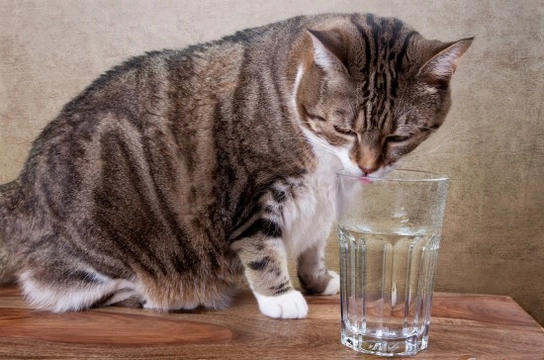
Why is My Dog / Cat Drinking More?
As with many problems that affect our dogs and cats, increased thirst (polydipsia) may arise for a variety of reasons. Drinking more can be indicative of a medical condition, so it’s very important to seek veterinary advice if you have noticed that, or suspect that your pet is thirstier than usual.
Polydipsia may be symptomatic of any of the following conditions:-
- Renal (kidney) dysfunction.
- Hepatic (liver) disease.
- Diabetes mellitus.
- Diabetes insipidus (this is a rare condition also known as water diabetes).
- Addison’s disease (decreasedsteroidproduction by the adrenal glands).
- Pyometra (infection of the womb; which may affect unspayed bitches or queens).
- Urinary tract infections.
- Behavioural issues (occasionally some animals can become psychologically obsessed by drinking water and the excess fluid intake causes medullary washout that makes them want to drink even more).
- Hyperthyroidism (which is common in older cats but rare in dogs).
- Cushing’s disease (too much cortisol steroid is produced by the adrenal glands).
Some other less serious potential causes of increased thirst may include:-
- Warmer weather and increased humidity.
- Increased level of activity / excitement / anxiety.
- Eating salty additions / treats.
- A change from wet food to dry food or increasing the proportion of dry to wet food.
- Changing from a diet which is lower in sodium to one which contains a higher level. (Some prescription diets designed for urinary crystal dissolution contain a higher sodium content for example).
- Certain drugs (for example diuretics which remove excess fluid from the body or phenobarbital used to treat epilepsy).
- Feeding a very low protein diet.
A dog or cat who is drinking more, will also urinate more (polyuria) but fluids should not be withheld unless your vet has specifically advised this. It’s imperative your pet drinks sufficient water to prevent dehydration and loss of electrolytes.
A urine specific gravity test is a relatively inexpensive and non-invasive means to check that the kidneys are able to concentrate the urine properly. If you are worried your dog or cat is drinking more, it can be helpful for your vet if you are able to measure the fluid intake. This is easily done in a single pet household by filling the drinking bowl with a measured amount of water and topping it up whenever necessary with a further measured volume. At the end of a 24 hour period you then measure the amount left in the bowl and subtract this from the total.
The normal average water intake for mammalian species is 44-66 ml/kg body weight ~ but if in doubt ~ seek veterinary help! Cats and dogs may also be drinking elsewhere (e.g. from toilet bowls, puddles, dripping taps etc so do be vigilant) and if there is more than one animal using a communal drinking vessel then this job can be tricky.
If your pet is presented to your vet with polydipsia, hospitalisation may be required so that the fluid intake and urine output can be measured. This will enable your vet to determine an accurate level of thirst and urination, which can then be compared against a baseline of normal hydration and urination. An addition to urinalysis, your vet may also want to carry out further diagnostic procedures such as blood tests and radiographs.



